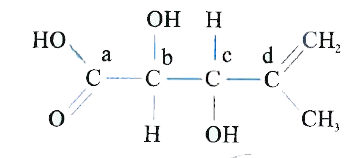The molecule given below is

glucose
fructose
sucrose
galactose
The correct Answer is:A
Step by step video & image solution for The molecule given below is by Biology experts to help you in doubts & scoring excellent marks in Class 12 exams.
Updated on:21/07/2023Topper's Solved these Questions
- BIOMOLECULES AND ENZYMESBook:ARIHANT NEETChapter:BIOMOLECULES AND ENZYMESExercise:Check Point (17.2)
Explore 20 Videos
- BIOMOLECULES AND ENZYMESBook:ARIHANT NEETChapter:BIOMOLECULES AND ENZYMESExercise:Check Point (17.3)
Explore 15 Videos
- BIOLOGICAL CLASSIFICATIONBook:ARIHANT NEETChapter:BIOLOGICAL CLASSIFICATIONExercise:Chapter Exercises C Medical entrances gallery (Collection of Questions asked in NEET & Various Medical Entrance Exams )
Explore 21 Videos
- BIOTECHNOLOGY : PRINCIPLES AND PROCESSESBook:ARIHANT NEETChapter:BIOTECHNOLOGY : PRINCIPLES AND PROCESSESExercise:Chapter exercises (C. Medical entrances gallery (Collection of Questions Asked in NEET & Various Medical Entrance Exams))
Explore 85 Videos
Similar Questions
Knowledge Check
Consider the molecules given below:
Which of these molecules would be expected to be planar?Aonly 1, 2 and 3 are correctBonly 2 and 3 are correctConly 3 and 4 are correctDonly 2 and 4 are correctWhich of the carbon atoms present in the molecule given below are asymmetric?
 Aa, b, c, dBb, cCa, dDa, b, c
Aa, b, c, dBb, cCa, dDa, b, cWhich of the carbon atoms present in the molecule given below are asymmetric?
 Aa, b, c, dBb, cCa, dDa, b, c
Aa, b, c, dBb, cCa, dDa, b, c
The total number of compounds having at least one bridging oxo group among the molecules given below is ____. N2O3,N2O5,P4O6,P4O7,H4P2O5,H5P3O10,H2S2O3,H2S2O5
View SolutionThe total number of compounds having at least one bridging oxo group among the molecules given below is
N2O3,N2O5,P4O6,P4O7,H4P2O5,H5P3O10,H2S2O3,H2S2O5
View SolutionWhich of the carbon atoms present in the molecule given below are asymmetric ?

View SolutionWhich of the carbon atom present in the molecule given below are asymmetric.

View SolutionWhich of the carbon atoms present in the molecule given below are asymmetric ?

View Solution
